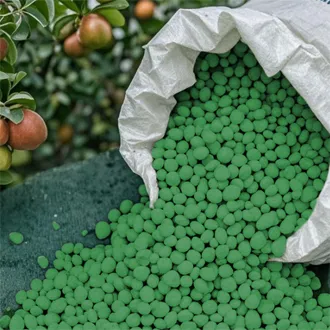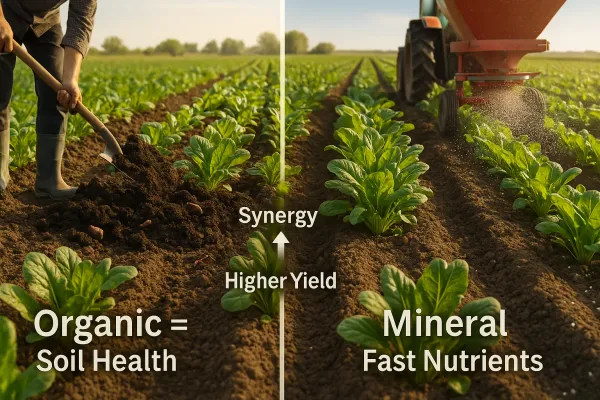Avoid your inquiry is delay response, please enter your WhatsApp/Skype along with the message, so we can contact you at the very first time.
We will reply you within 24 hours. If for urgent case, please add WhatsApp/WeChat:
Warning: Undefined variable $public in /www/wwwroot/lvfertilizer.com/wp-content/themes/hyhadmin/header.php on line 350
Warning: Trying to access array offset on value of type null in /www/wwwroot/lvfertilizer.com/wp-content/themes/hyhadmin/header.php on line 350
,. Or call
Warning: Undefined variable $public in /www/wwwroot/lvfertilizer.com/wp-content/themes/hyhadmin/header.php on line 350
Warning: Trying to access array offset on value of type null in /www/wwwroot/lvfertilizer.com/wp-content/themes/hyhadmin/header.php on line 350
directly.
Soils that look rich can still hide silent nutrient gaps. When just one element runs short, plant growth stalls, profits fall, and frustration rises. A tailor‑made NPK fertilizer regime effectively promote[s] the growth you need—fast, predictable, and scalable.
NPK fertilizer supplies nitrogen, phosphorus, and potassium in precise ratios. The blend fuels leaves, roots, and resilience, lifting plant height, root density, and grain weight. The exact effect of NPK depends on soil, climate, and fertilizer application timing, but balanced nutrition almost always boosts yield and quality.
Every bag of fertilizer lists numbers such as 20‑10‑10; that code shows how much nitrogen, phosphorus, and potassium the fertilizer contains. These three are classed as essential nutrient elements because plants need them at every growth stage. Skipping any one will limit growth and development no matter how ideal the sunlight or water.
Key Takeaways
Quote: “A balanced blend is the optimal and most favorable fertilizer for both field crops and high‑value horticulture.” — Dr. Zhang Ming, Soil Scientist
For more on balanced blends, see our in‑depth piece on controlled‑release fertilizer.

When the triad works together, you see an increase plant vigor almost overnight. Yet scientists who study the effects of NPK also measure subtle biochemical shifts like expression levels during the growth cycle or changes in fpps in the growth pathway (farnesyl pyrophosphate synthase) that drive terpene synthesis.
| Nutrient | Primary Engine | Visible Result |
|---|---|---|
| Nitrogen (N) | Amino acids & chlorophyll | Higher plant height and stem leaf mass |
| Phosphorus (P) | ATP & DNA | Faster root elongation; earlier flowering |
| Potassium (K) | Enzyme activation | Thicker cell walls, improved drought tolerance |
The impact of NPK peaks when ratios match crop demand at each growth period—from seedling to middle and late growth stages.
Field trials comparing different NPK fertilization treatments on rice showed a 14 % yield jump over unfertilized plots. The significant effect of NPK extended beyond yield: root scanning revealed a 22 % gain in fine root length, proving nutrition strongly influences the growth of roots as well as shoots.
Researchers noted that npk on the growth of legumes also boosted nodulation, making the crop conducive to the growth of beneficial rhizobia.
Case DataIncrease in NPK → +17 cm plant height at V6 stage; +9 % higher harvest index.
Getting the fertilizer on growth response you expect means managing more than the product itself.
Special projects, such as fertilizer in coal‑contaminated spoils using bio‑char plus minerals, show that targeted programs can rehabilitate degraded land.
Learn how water‑soluble fertilizer solutions integrate with sensors for water and fertilizer applications improve efficiency by up to 30 %.
Selecting different NPK ratios isn’t guesswork; it’s science. During the early vegetative growth, crops thrive on higher N like 20‑10‑10, whereas fruit fill rewards more K such as 10‑10‑20. Phosphorus fertilizer can allow stronger rooting when applied as a band—it’s proven that greater application of phosphorus fertilizer early accelerates canopy closure.
| Stage | Recommended npk application | Goal |
| Seedling | 12‑24‑12 | Establish deep roots |
| Rapid Veg | 20‑10‑10 | Build biomass |
| Bloom | 15‑15‑15 | Support flowers |
| Fill | 10‑10‑20 | Sugar loading |
Remember, the dose of NPK fertilizer must align with soil tests; excess salts can hurt rather than help.
For specialty crops, our R&D has formulated different NPK fertilization formulas that synchronize growth and pharmacodynamic component biosynthesis—critical when you aim to enhance the growth of the medicinal parts in herbs.
Internal Link: Discover NPK 14‑14‑14 balanced fertilizer for gardens needing equal nutrition.
Many growers prefer the eco‑image of organic fertilizer, yet trials prove that combining compost with mineral granules—known as the effects of NPK combined application—boosts spinach yield by 28 %. The effect of different nutrient sources is synergy: organics improve soil biology, while minerals supply immediate nutrient for growth and yield.
“Blending organics and minerals is beneficial to the growth of both soil microbes and the cash crop.” — FAO Bulletin 212
Want to compare performance? See fertilizer quality assurance program results from 40 field locations.

Combined application delivers 28 % higher yield thanks to balanced nutrients and improved soil health.
A common question concerns the application of phosphate fertilizer could change soil pH. Research shows that moderate P rates improve pH buffering, while excessive P may cause tie‑up. Therefore phosphate fertilizer could increase both nutrient use efficiency and revenue when calibrated.
To decide on the optimal water and fertilizer applications:
A handheld sensor helped one farmer observe a 5 % increase the growth rate of wheat by tweaking nitrogen split with enhanced‑efficiency phosphorus fertilizer.
Over two seasons, agronomists compared effects of different NPK combinations on hybrid corn.
| Treatment | Yield (t/ha) | Profit (USD/ha) | Notes |
| Control | 6.9 | 0 | Low vigor |
| 150 kg NPK | 8.4 | 215 | Balanced nutrition |
| 225 kg NPK | 8.6 | 198 | Plateau reached |
| 150 kg NPK + 10 t Compost | 8.7 | 240 | Best net return |
The fertilizer treatment combining minerals and organics delivered the highest profit, proving different fertilizer combinations may outperform high mineral rates alone.

We invest in ammonia from green hydrogen, recycle K from salt‑lake brines, and craft enhanced‑efficiency phosphorus fertilizer that releases nutrients slowly. Our R&D validates each batch in trials measuring response of growth and growth period.
Highlights
Read more at custom formulation services.
As a leading manufacturer and exporter we support Agricultural Distributors & Importers, Commercial Farm Owners & Cooperatives, and Government & NGO Agricultural Projects with:
Our balanced portfolio—from type of fertilizer starter blends to specialty high‑K finishes—offers the favorable fertilizer composition for improving your ROI.
Which ratio is best for leafy vegetables?
High‑N blends like 25‑10‑10 spur lush leaves during vegetative growth stage, while a finishing 10‑10‑20 tightens cell structure.
Can greater potassium in the fertilizer reduce disease?
Yes. Adequate K thickens cell walls, making tissues less susceptible to fungal entry.
Does reasonable NPK administration work in hydroponics?
Absolutely. Precision drip lets growers fine‑tune fertilizer levels by EC to match transpiration.
How do different NPK fertilization formulas affect root crops?
Balanced P and K improve tuber size; too much N delays bulking.
Is there a significant effect of NPK on aromatic herbs?
Trials show higher oil concentrations when N is moderate and P:K is 1:2.
What if soil tests show low zinc?
Combine micronized ZnSO4 with your base NPK; balanced npk fertilization plus Zn boosts both yield and nutritional density.
Ready to unlock your field’s true potential? Contact our nutrient experts today for a tailored program and free sample quote.